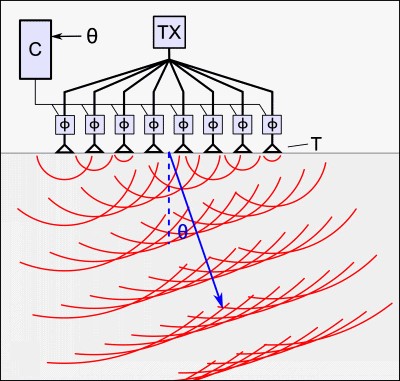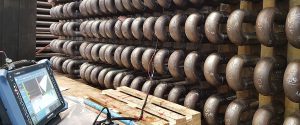


PHASED ARRAY ULTRASONIC TESTING (PAUT)
Phased Array Ultrasonic Testing is an advanced application of ultrasonic testing technology. It can be used for weld inspections, crack and flaw detections, thickness measurements and corrosion inspections. Because of the detailed visualization of the defect size, shape, depth and orientation, Phased Array can often be used instead of Radiographic Testing. Since it doesn’t have any hazardous to human nature, there is no need to create a safety zone which usually means interrupting production.
Why to convert from Conventional UT to Phased Array UT?
In conventional UT testing, the transduces have a single or dual element to generate the ultrasonic sounds by transmitting and receiving ultrasonic waves into the material. Phased Array probes/transducers contain multiple elements to generate ultrasonic sound waves. By introducing a delay between the pulser of each element, the beam angle, focal point and focal spot of the generated wavefront can be influenced. This makes Phased Array Ultrasonic Testing a very versatile method that can be used for complex and any geometries.
With the ability to collect and encode full volumetric data, Phased Array brings code compliance and auditable results on day-to-day basis. This makes Phased Array an effective and efficient alternate to Radiographic inspection. And since there is no environmental hazards, Phased Array inspections can increase project production by not displacing other crafts in the area, and maximizes on-site and personnel safety.
Phased Array Ultrasonic Testing (PAUT) for Boiler Tubes Inspection
Boiler tubes are a key component of thermal power plants and as such are subjected to high pressure steam flow. This means that boiler tube weld inspection is crucial to keeping mission-critical operations safe.
Over a time, phased array ultrasonic testing (PAUT) has emerged as one of the best means of non-destructive testing (NDT) of boiler tubes. This technique allows for comprehensive inspections that reduce downtime and promote thorough preventative maintenance. The high-speed testing process is uniquely designed to fit the challenging environments and less spaces and low foot print. U-SONIX’s has specialized scanner and that can be used to inspect diameters ranging from 0.84 in. OD up to 4.5 in. OD. It accommodates up to two phased array probes in such limited clearance.
Now a days Advanced NDT Phased Array Ultrasonics (PAUT) Boiler Tube Inspection have become almost the norm in many industries. The benefits of this NON-DESTRUCTIVE testing technology being the ability to store a full inspection record using the Phased Array UT Equipment with its “True to Geometry” visual display capability enhances inspection interpretation. The visual display of combined A-Scan, B-Scan, C-Scan and S-Scan gives a simplified understanding of flaw type and associated dimensions with the additional options of 3D imaging.

Petrochemical
Power Generation
Aerospace
Merits of Phased Array Ultrasonic Testing (PAUT)

+91 63839 92501
admin@u-sonix.com